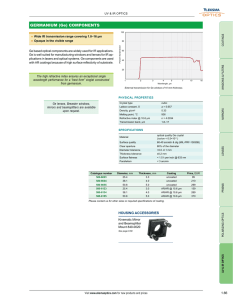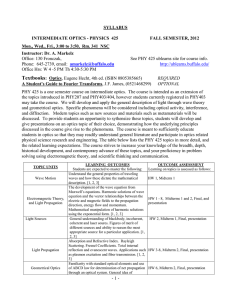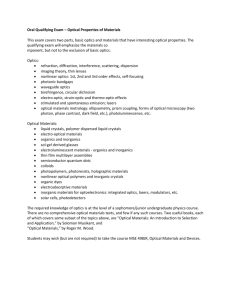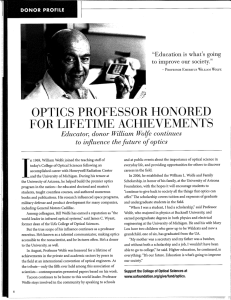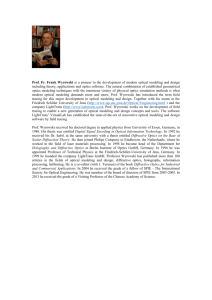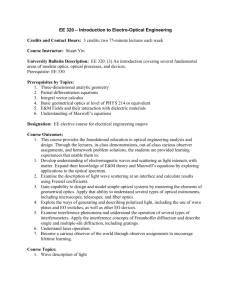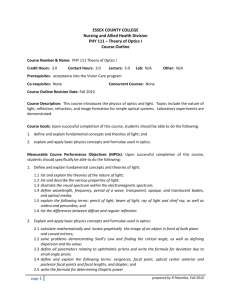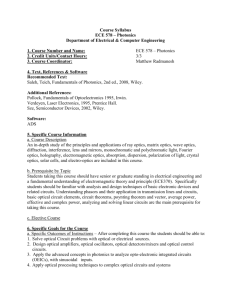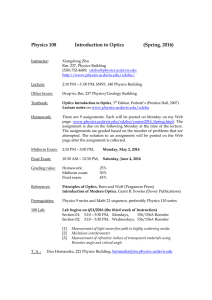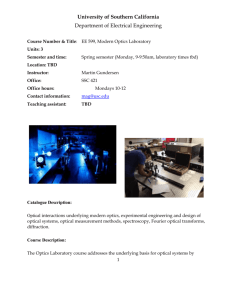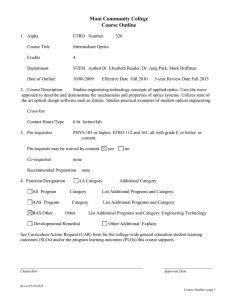PHYSICS 304 - OPTICS - Science 258 - 3 Credit Hours
advertisement
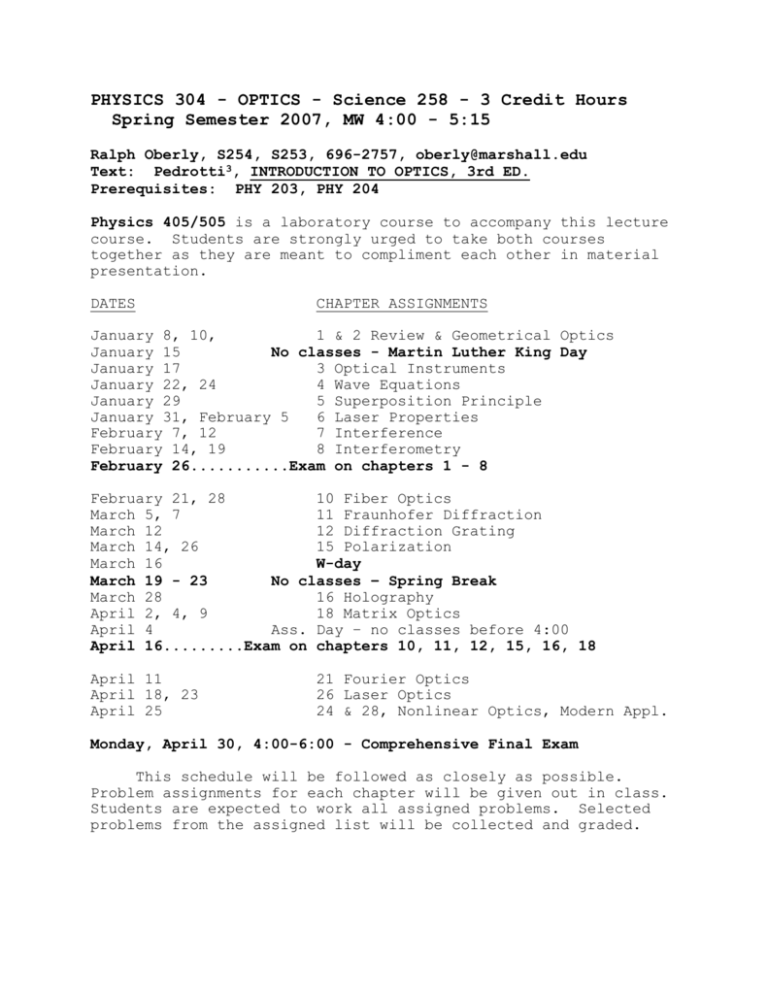
PHYSICS 304 - OPTICS - Science 258 - 3 Credit Hours Spring Semester 2007, MW 4:00 - 5:15 Ralph Oberly, S254, S253, 696-2757, oberly@marshall.edu Text: Pedrotti3, INTRODUCTION TO OPTICS, 3rd ED. Prerequisites: PHY 203, PHY 204 Physics 405/505 is a laboratory course to accompany this lecture course. Students are strongly urged to take both courses together as they are meant to compliment each other in material presentation. DATES CHAPTER ASSIGNMENTS January 8, 10, 1 & 2 Review & Geometrical Optics January 15 No classes - Martin Luther King Day January 17 3 Optical Instruments January 22, 24 4 Wave Equations January 29 5 Superposition Principle January 31, February 5 6 Laser Properties February 7, 12 7 Interference February 14, 19 8 Interferometry February 26...........Exam on chapters 1 - 8 February 21, 28 10 Fiber Optics March 5, 7 11 Fraunhofer Diffraction March 12 12 Diffraction Grating March 14, 26 15 Polarization March 16 W-day March 19 - 23 No classes – Spring Break March 28 16 Holography April 2, 4, 9 18 Matrix Optics April 4 Ass. Day – no classes before 4:00 April 16.........Exam on chapters 10, 11, 12, 15, 16, 18 April 11 April 18, 23 April 25 21 Fourier Optics 26 Laser Optics 24 & 28, Nonlinear Optics, Modern Appl. Monday, April 30, 4:00-6:00 - Comprehensive Final Exam This schedule will be followed as closely as possible. Problem assignments for each chapter will be given out in class. Students are expected to work all assigned problems. Selected problems from the assigned list will be collected and graded. Physics 304 – Optics – Spring 2007 – Syllabus Page 2 Course Grade: Your course grade will be determined by your scores on two exams (100 points each), your percentage on the collected problems (100 points), and the comprehensive final exam (200 points). Students are expected to attend all classes as demonstrations are an important part of the course. No specific grade is assigned to attendance but students ending up on a grade borderline will not get the benefit of the doubt if they have missed many classes. If a dispute exists on attendance see the University attendance policy posted on the instructor’s door. Student attention during the class period should be directed to the physics being discussed in class. Cell phones, beepers and any other communication devices should not be active in the classroom, especially on exam days. Office hours: MWF 10:00-11:30, T 3:00-4:00, MW 2:00-3:30 Objectives: Each student is expected to learn concepts and problem solving techniques in the areas of simple optical elements (lenses, mirrors, fibers, prisms, gratings, polarizers, etc.), complex optical equipment (monochromators, interferometers, optical image processors, lasers, etc.), and selected applications of these elements and equipment. The student is expected to solve problems relative to the assigned work. Students are encouraged to work in teams on homework assignments even though the work is turned in individually. Applications of the course material will be discussed and related to current commercial and research devices using optical and electro-optical principles. Some examples are optical scanners, CD readers, corrective lenses and reading glasses, holograms, and fiber communications. Topics are selected based on available time and faculty/student interest. This is primarily an algebra and trigonometry based course with some references to calculus operations and matrix algebra where absolutely necessary. Students are expected to think in logical and quantitative ways. Exams will consist of relevant conceptual and problem solving questions. Students are encouraged to use mathematics software in solving some problems such as the matrix multiplication for ray propagation during translation, reflection, and refraction of optical rays. Students are expected to ask questions during class or after class on concepts and techniques that bother them. Students are strongly encouraged to work on problem assignments together. Work turned in for grading should be written out in each student’s own solution.

